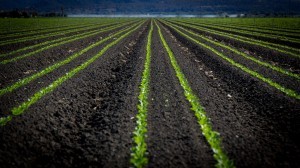It occurs naturally, it has been used in farming by generations past and it lasts a really, really long time. What are thebest ways to use biochar in the field?
Here are some tips that may you may find useful.
- Applying plain biochar direct to the field is best done before a leguminous cover crop. Leguminous crops tend to perform very well in this condition, dramatic increases in biological nitrogen fixation and total biomass have been observed when plain biochar was applied to the soil (Rondon et. al, 2007, Ducey et. al, 2013).
- Start with your starts. Getting your seeds up early and vigorous can turn into significant increases come harvest. In general that means using biochar in the seedling trays oras a down the row treatment when seeding. In both cases, it is recommended that an improved biochar such as our Blacklite Mix #6 or Blacklite Compost is used.
- When planting trees, bushes and vineyards, biochar can be blended with other amendments such as micronutrients and microbial inoculants to create an effective soil treatment for the planting hole and backfill material. This can help jumpstart the vigor of the establishing plant.
- Blending biochar with organic based fertilizers before they are applied can help ensure that the nutrients reach your plant. Biochar can hold onto available nutrients in a manner that helps reduce nutrient volatilization and leaching (Taghizadeh-Toosi et. al, 2011). Interestingly, biochar can also act as a microbial activity catalyst, aiding in denitrification and P solubilization and other important functions (Cayuela et. al, 2013, De Mendes et. al, 2014). These two qualities paired together make biochar an ideal material to blend with fertilizer – improving availability while also reducing loss! You can expect that in years to come biochar will become a standard component in fertilizer blends, till then, you can buy it from us and blend it yourself with your desired fertilizers.
Bibliography
- Biological Nitrogen Fixation by Common Beans (Phaseolus Vulgaris L.) Increases with Biochar Additions,, Biology and Fertility in Soils, Volume 43, p.699-708, (2007)
- Addition of activated switchgrass biochar to an aridic subsoil increases microbial nitrogen cycling gene abundances,, Applied Soil Ecology, Volume 65, p.65-72, (2013)
- Biochar adsorbed ammonia is bioavailable,, Plant and Soil, 07/2011, (2011)
- Biochar and denitrification in soils: when, how much and why does biochar reduce N2O emissions?,, Sci Rep, (2013)
- Biochar enhances Aspergillus niger rock phosphate solubilization by increasing organic acid production and alleviating fluoride toxicity,, Applied and Environmental Microbiology, (2014)



